-
 Bitcoin
Bitcoin $105,385.4541
0.55% -
 Ethereum
Ethereum $2,537.5225
0.93% -
 Tether USDt
Tether USDt $1.0003
-0.02% -
 XRP
XRP $2.1601
0.92% -
 BNB
BNB $646.8156
0.36% -
 Solana
Solana $150.4487
4.30% -
 USDC
USDC $0.9999
0.00% -
 Dogecoin
Dogecoin $0.1759
-0.22% -
 TRON
TRON $0.2729
1.31% -
 Cardano
Cardano $0.6299
0.61% -
 Hyperliquid
Hyperliquid $40.6968
1.01% -
 Sui
Sui $3.0011
3.68% -
 Bitcoin Cash
Bitcoin Cash $459.2113
6.74% -
 Chainlink
Chainlink $13.1405
1.21% -
 UNUS SED LEO
UNUS SED LEO $9.1731
1.28% -
 Avalanche
Avalanche $19.0667
1.05% -
 Stellar
Stellar $0.2576
0.75% -
 Toncoin
Toncoin $2.9670
0.95% -
 Shiba Inu
Shiba Inu $0.0...01199
-0.13% -
 Litecoin
Litecoin $85.9529
1.13% -
 Hedera
Hedera $0.1542
-0.96% -
 Polkadot
Polkadot $3.7918
1.11% -
 Ethena USDe
Ethena USDe $1.0000
-0.03% -
 Monero
Monero $315.8141
0.84% -
 Dai
Dai $0.9998
-0.01% -
 Bitget Token
Bitget Token $4.5147
-0.55% -
 Pepe
Pepe $0.0...01115
2.24% -
 Uniswap
Uniswap $7.1330
-0.91% -
 Pi
Pi $0.6011
-1.51% -
 Aave
Aave $273.4436
0.48%
The long upper shadow line falls back under pressure: Is the next day's reversal a signal of a wash?
A long upper shadow followed by a fallback in crypto often leads to speculation about a next-day reversal, which traders must analyze to avoid potential washes.
Jun 08, 2025 at 11:00 pm
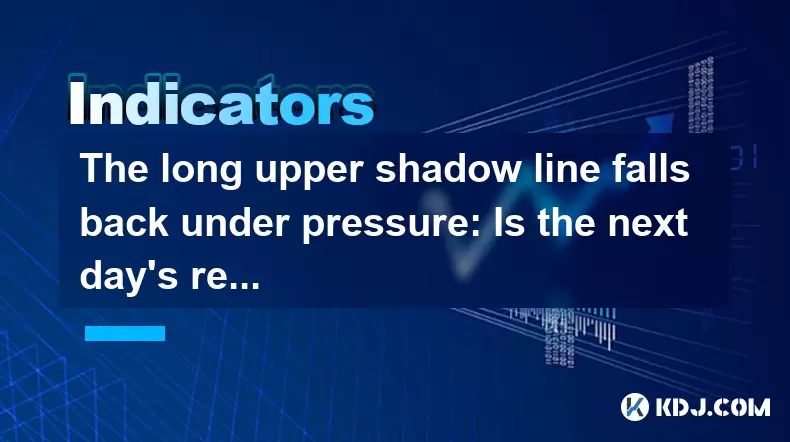
The phenomenon of a long upper shadow line followed by a fallback under pressure is a common occurrence in the volatile world of cryptocurrencies. This pattern can often lead traders to speculate about the possibility of a reversal the next day and whether it signals a wash. Understanding this pattern, its implications, and how to interpret it can be crucial for making informed trading decisions.
Understanding the Long Upper Shadow Line
A long upper shadow line on a candlestick chart indicates that the price of a cryptocurrency rose significantly during the trading period but then fell back before the close. This suggests that buyers initially pushed the price up, but sellers eventually took control, driving the price down. The length of the upper shadow can indicate the strength of the sellers' reaction.
The Fallback Under Pressure
When the price falls back under pressure after forming a long upper shadow, it often means that the initial bullish momentum was not sustained. This can be due to various factors, such as profit-taking by early buyers, negative news, or increased selling pressure. The fallback under pressure is a critical point where traders need to assess whether the trend is likely to continue or if a reversal is imminent.
Next Day's Reversal: A Signal of a Wash?
A reversal the next day after a long upper shadow and fallback under pressure can be a significant event for traders. The question arises: is this reversal a signal of a wash? A wash, in trading terms, refers to a situation where the price moves in a way that appears to be manipulated to deceive traders. To determine if the next day's reversal is a wash, several factors need to be considered.
Analyzing the Reversal
When analyzing the next day's reversal, traders should look at several key indicators:
- Volume: High trading volume during the reversal can indicate strong market interest and potentially genuine price movement. Low volume might suggest a lack of conviction and could be indicative of a wash.
- Price Action: The nature of the price action following the reversal is crucial. If the price continues to move in the direction of the reversal with sustained momentum, it is less likely to be a wash.
- Market Sentiment: Understanding the overall market sentiment can provide context. If the sentiment aligns with the reversal, it is less likely to be a wash.
Technical Indicators and Patterns
To further assess the validity of the next day's reversal, traders can use various technical indicators and patterns:
- Moving Averages: If the price moves above or below key moving averages during the reversal, it can provide additional confirmation of the trend.
- Relative Strength Index (RSI): An RSI reading that moves out of overbought or oversold territory can support the reversal's legitimacy.
- Candlestick Patterns: Other candlestick patterns, such as doji or hammer patterns, can provide additional insights into the potential for a reversal.
Case Studies and Historical Data
Examining case studies and historical data can offer valuable insights into how similar patterns have played out in the past. By looking at instances where a long upper shadow line was followed by a fallback and then a reversal, traders can identify common outcomes and refine their strategies.
For example, in a specific instance where Bitcoin experienced a long upper shadow followed by a fallback and then a reversal the next day, the analysis might reveal that the reversal was supported by high volume and positive market sentiment, suggesting it was not a wash. Conversely, another case might show low volume and erratic price action, indicating a potential wash.
Risk Management and Trading Strategies
Given the potential for the next day's reversal to be a wash, risk management becomes paramount. Traders should consider the following strategies:
- Stop-Loss Orders: Setting stop-loss orders can help limit potential losses if the reversal turns out to be a wash.
- Position Sizing: Adjusting position sizes based on the perceived risk can help manage exposure.
- Diversification: Spreading investments across different assets can reduce the impact of a single wash on the overall portfolio.
Psychological Factors
The psychological aspect of trading cannot be overlooked. The fear of missing out (FOMO) can drive traders to make impulsive decisions based on a perceived reversal. Conversely, the fear of a wash can lead to hesitation and missed opportunities. Understanding and managing these psychological factors is essential for making rational trading decisions.
Tools and Platforms
Utilizing the right tools and platforms can enhance a trader's ability to analyze and react to patterns like the long upper shadow and fallback. Platforms that offer real-time data, advanced charting capabilities, and customizable alerts can be invaluable.
- TradingView: Known for its powerful charting tools and community-driven indicators, TradingView can help traders visualize and analyze patterns.
- Coinigy: This platform offers a comprehensive suite of tools for cryptocurrency trading, including real-time data and advanced order types.
- CryptoWatch: With its focus on cryptocurrency markets, CryptoWatch provides detailed charts and market data that can aid in pattern recognition.
FAQs
Q: How can traders differentiate between a genuine reversal and a wash?
A: Traders can differentiate between a genuine reversal and a wash by analyzing key factors such as trading volume, price action, and market sentiment. High volume and sustained price movement in the direction of the reversal are generally indicative of a genuine trend change, while low volume and erratic price action may suggest a wash.
Q: Are there specific cryptocurrencies that are more prone to washes after a long upper shadow and fallback?
A: While no specific cryptocurrencies are inherently more prone to washes, highly volatile and low-cap cryptocurrencies may be more susceptible to manipulation and washes due to their smaller market sizes and liquidity.
Q: How can historical data be used to predict the likelihood of a wash after a long upper shadow and fallback?
A: Historical data can be analyzed to identify patterns and outcomes following similar events. By examining past instances of long upper shadows, fallbacks, and subsequent reversals, traders can gain insights into the likelihood of a wash occurring under similar conditions.
Q: What role does market sentiment play in determining whether a reversal is a wash?
A: Market sentiment plays a crucial role in determining the validity of a reversal. If the overall sentiment aligns with the direction of the reversal, it is less likely to be a wash. Conversely, if the sentiment contradicts the reversal, it could indicate a potential wash.
Disclaimer:info@kdj.com
The information provided is not trading advice. kdj.com does not assume any responsibility for any investments made based on the information provided in this article. Cryptocurrencies are highly volatile and it is highly recommended that you invest with caution after thorough research!
If you believe that the content used on this website infringes your copyright, please contact us immediately (info@kdj.com) and we will delete it promptly.
- Solana (SOL) Price Prediction: $200 Soon? Experts Are Betting on Ruvi AI (RUVI) As Investors Enjoy 9,200% Potential
- 2025-06-16 00:45:12
- Fedrok AG is a Swiss blockchain company focused on combating climate change by transforming the carbon credit market.
- 2025-06-16 00:45:12
- NEXO Will Host an AMA on X on Crypto Taxation Featuring Representatives from Koinly
- 2025-06-16 00:40:15
- OGV to OGN Migration Process Will End on May 27th
- 2025-06-16 00:40:15
- Blockchain fintech firm Liquid Noble says it's working to improve the user experience for investors in tokenized precious metals
- 2025-06-16 00:35:12
- DIA will host an AMA on X with PeaPods Finance
- 2025-06-16 00:35:12
Related knowledge
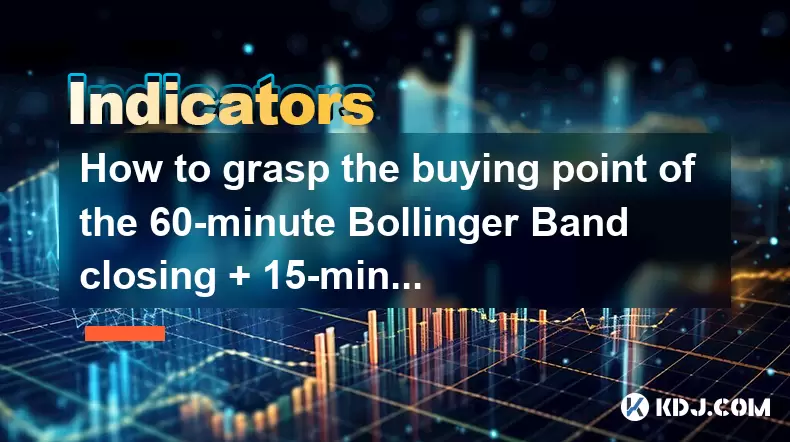
How to grasp the buying point of the 60-minute Bollinger Band closing + 15-minute MACD bottom divergence?
Jun 16,2025 at 12:03am
Understanding the Bollinger Band Closing Signal on a 60-Minute ChartThe Bollinger Band closing signal refers to a situation where the price closes outside the upper or lower band and then re-enters it in the subsequent candlestick. In this context, we focus on the lower Bollinger Band closing, which indicates a potential reversal from a downtrend. On th...
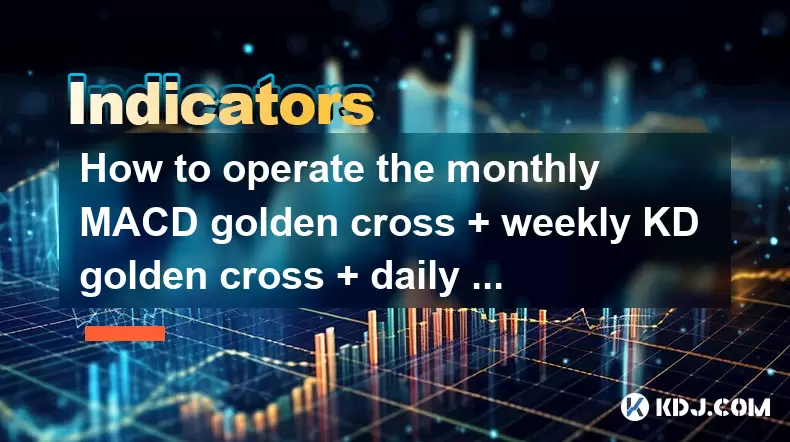
How to operate the monthly MACD golden cross + weekly KD golden cross + daily volume breakthrough?
Jun 15,2025 at 05:36am
Understanding the Strategy: Monthly MACD Golden CrossTo effectively operate the monthly MACD golden cross, traders must first understand what this signal entails. The MACD (Moving Average Convergence Divergence) golden cross occurs when the MACD line crosses above the signal line on a given chart timeframe. When this happens on the monthly chart, it sug...
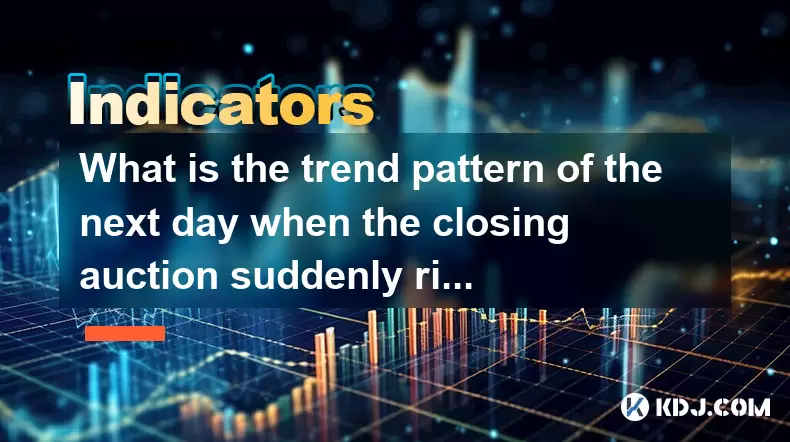
What is the trend pattern of the next day when the closing auction suddenly rises?
Jun 15,2025 at 08:15am
Understanding Closing Auctions in Cryptocurrency MarketsIn the context of cryptocurrency trading, a closing auction refers to a mechanism used by exchanges to determine the closing price of an asset at the end of a trading session. This process typically occurs within a short time window before the market closes for the day and aims to provide a fair an...

What does it mean when the volume fluctuates during the sideways trading at high levels?
Jun 15,2025 at 10:28am
Understanding Volume Fluctuations in Sideways TradingWhen volume fluctuates during sideways trading at high levels, it refers to the changes in the number of assets traded over a given period while the price remains relatively stable, moving within a defined range. This phenomenon typically occurs when the market lacks a clear directional bias—neither b...
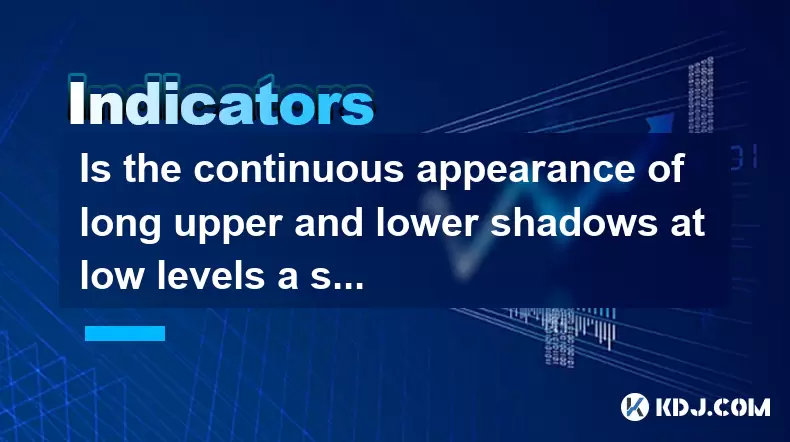
Is the continuous appearance of long upper and lower shadows at low levels a signal of accumulation?
Jun 15,2025 at 01:43am
Understanding Long Upper and Lower Shadows in Candlestick ChartsIn the world of cryptocurrency trading, candlestick patterns are widely used to analyze price movements. A long upper shadow, also known as a wick or tail, indicates that the price rose significantly during the period but was pushed back down by selling pressure. Conversely, a long lower sh...
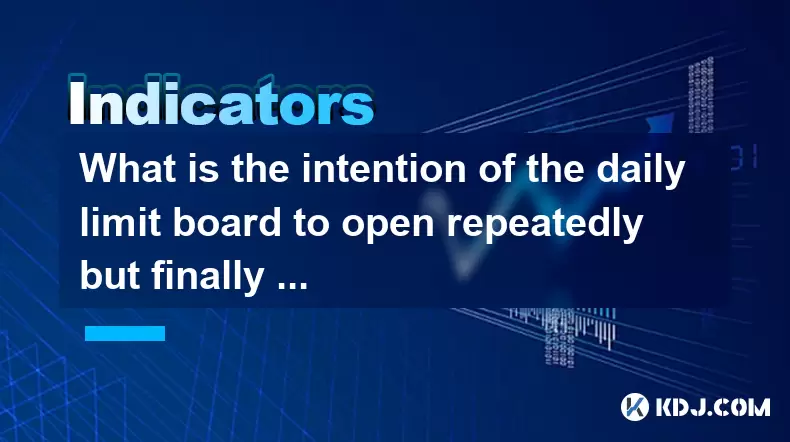
What is the intention of the daily limit board to open repeatedly but finally close?
Jun 15,2025 at 01:08am
Understanding the Daily Limit Board in Cryptocurrency TradingIn cryptocurrency trading, a daily limit board refers to a price movement restriction mechanism applied by certain exchanges or regulatory bodies. This mechanism is primarily used to prevent extreme volatility and panic selling or buying during periods of intense market fluctuation. When an as...

How to grasp the buying point of the 60-minute Bollinger Band closing + 15-minute MACD bottom divergence?
Jun 16,2025 at 12:03am
Understanding the Bollinger Band Closing Signal on a 60-Minute ChartThe Bollinger Band closing signal refers to a situation where the price closes outside the upper or lower band and then re-enters it in the subsequent candlestick. In this context, we focus on the lower Bollinger Band closing, which indicates a potential reversal from a downtrend. On th...

How to operate the monthly MACD golden cross + weekly KD golden cross + daily volume breakthrough?
Jun 15,2025 at 05:36am
Understanding the Strategy: Monthly MACD Golden CrossTo effectively operate the monthly MACD golden cross, traders must first understand what this signal entails. The MACD (Moving Average Convergence Divergence) golden cross occurs when the MACD line crosses above the signal line on a given chart timeframe. When this happens on the monthly chart, it sug...

What is the trend pattern of the next day when the closing auction suddenly rises?
Jun 15,2025 at 08:15am
Understanding Closing Auctions in Cryptocurrency MarketsIn the context of cryptocurrency trading, a closing auction refers to a mechanism used by exchanges to determine the closing price of an asset at the end of a trading session. This process typically occurs within a short time window before the market closes for the day and aims to provide a fair an...

What does it mean when the volume fluctuates during the sideways trading at high levels?
Jun 15,2025 at 10:28am
Understanding Volume Fluctuations in Sideways TradingWhen volume fluctuates during sideways trading at high levels, it refers to the changes in the number of assets traded over a given period while the price remains relatively stable, moving within a defined range. This phenomenon typically occurs when the market lacks a clear directional bias—neither b...

Is the continuous appearance of long upper and lower shadows at low levels a signal of accumulation?
Jun 15,2025 at 01:43am
Understanding Long Upper and Lower Shadows in Candlestick ChartsIn the world of cryptocurrency trading, candlestick patterns are widely used to analyze price movements. A long upper shadow, also known as a wick or tail, indicates that the price rose significantly during the period but was pushed back down by selling pressure. Conversely, a long lower sh...

What is the intention of the daily limit board to open repeatedly but finally close?
Jun 15,2025 at 01:08am
Understanding the Daily Limit Board in Cryptocurrency TradingIn cryptocurrency trading, a daily limit board refers to a price movement restriction mechanism applied by certain exchanges or regulatory bodies. This mechanism is primarily used to prevent extreme volatility and panic selling or buying during periods of intense market fluctuation. When an as...
See all articles

























































































